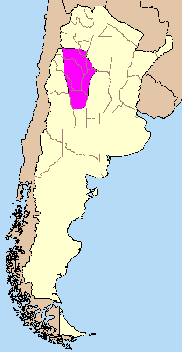Effects
The shallowing of subducted slab beneath north-central Chile and Argentina is linked to a series of changes in volcanism and tectonics.
Volcanic gap
The Pampean flat-slab has also caused a lull in the volcanism in the Andes seen in the lack of modern volcanoes between the Central Andean Volcanic Zone and the Southern Andean Volcanic Zone. [3] As the flat slab migrated from west to east under South America, so did volcanic activity, until it vanished 1.9 Ma ago, about 750 kilometres (470 mi) from the Pacific, far to the east of ordinary subduction volcanism. [2] Migration of the volcanic activity to the east meant that in the Principal Cordillera magmatic activity ended as early as 8.6 Ma ago. [2]
This page is based on this
Wikipedia article Text is available under the
CC BY-SA 4.0 license; additional terms may apply.
Images, videos and audio are available under their respective licenses.
